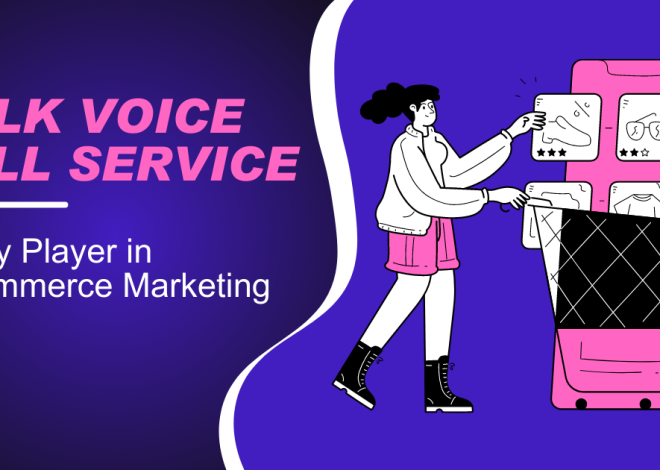Keyword Match Types Still Matter (Phrase & Exact Match Are Not Obsolete)
Understanding Keyword Match Types in PPC
Pay-Per-Click (PPC) advertising is a powerful tool for driving targeted traffic to your website. However, to make the most of your PPC campaigns, it’s essential to understand keyword match types. Keyword match types determine how closely a keyword must match a user’s search query for your ad to be considered for the auction. There are three primary match types: broad match, phrase match, and exact match. Despite changes in how search engines handle these match types, phrase and exact match are still highly relevant and effective.
Broad Match
Broad match is the default setting for keywords in PPC campaigns. When you use broad match, your ad can appear for searches that include misspellings, synonyms, related searches, and other relevant variations. This match type casts the widest net, allowing you to reach a broad audience.
Pros of Broad Match
-
High Visibility: Broad match keywords can generate a large volume of impressions because they match a wide range of search queries.
-
Discover New Keywords: By using broad match, you can uncover new, relevant keywords that you might not have thought of initially.
-
Increased Traffic: The broad reach of this match type can drive more traffic to your website.
Cons of Broad Match
-
Low Relevance: The broad nature of this match type can result in your ads appearing for irrelevant searches, which can waste your ad budget.
-
Lower Conversion Rates: Because broad match keywords attract a wider audience, the likelihood of conversions may be lower compared to more targeted match types.
-
Higher Costs: The lack of precision can lead to higher costs per click (CPC) as your ads may appear for searches that are not highly relevant to your business.
Phrase Match
Phrase match offers more control than broad match by ensuring that your ad appears only when the search query includes the exact phrase or close variations of the phrase with additional words before or after. Phrase match is denoted by placing quotation marks around the keyword, such as “blue running shoes.”
Pros of Phrase Match
-
Higher Relevance: Phrase match ensures that your ad appears for searches that include your exact keyword phrase, making it more relevant to the user’s intent.
-
Better Control: This match type provides a balance between broad match and exact match, offering better control over which searches trigger your ads.
-
Improved Conversion Rates: The increased relevance of phrase match keywords can lead to higher conversion rates.
Cons of Phrase Match
-
Reduced Reach: Phrase match has a narrower reach compared to broad match, which may result in fewer impressions and clicks.
-
Potential Missed Opportunities: By focusing on specific phrases, you might miss out on related searches that could also be valuable.
Exact Match
Exact match is the most precise keyword match type, ensuring that your ad appears only when the search query matches the exact keyword or very close variations. Exact match keywords are denoted by placing square brackets around the keyword, such as [blue running shoes].
Pros of Exact Match
-
Highest Relevance: Exact match keywords ensure that your ad appears for searches that exactly match your keyword, providing the highest level of relevance.
-
Increased Conversion Rates: The high relevance of exact match keywords often leads to higher conversion rates, as users searching for these terms are more likely to be interested in your product or service.
-
Better ROI: By targeting highly relevant searches, exact match keywords can improve your return on investment (ROI).
Cons of Exact Match
-
Limited Reach: Exact match keywords have the narrowest reach, which may result in fewer impressions and clicks.
-
Higher Cost per Click: Because exact match keywords are highly targeted, they can sometimes have a higher cost per click compared to other match types.
The Evolution of Keyword Match Types
Over the years, search engines like Google have made several changes to how keyword match types work. These changes have led some marketers to believe that phrase and exact match keywords are no longer as effective as they once were. However, understanding these changes can help you make informed decisions about your PPC strategy.
Close Variants
One of the significant changes to keyword match types is the inclusion of close variants. Close variants include misspellings, singular and plural forms, acronyms, stemmings (such as “running” and “run”), abbreviations, and accents. This change means that even exact match keywords can trigger ads for searches that are not an exact match but are deemed close enough by the search engine.
Impact on Phrase and Exact Match
The inclusion of close variants has expanded the reach of phrase and exact match keywords, making them slightly less precise but still highly relevant. This change aims to capture more relevant traffic without sacrificing the intent behind the search query. While some marketers may see this as a drawback, it can also present opportunities to reach a broader audience while maintaining relevance.
Strategic Use of Phrase and Exact Match
Despite the changes, phrase and exact match keywords are far from obsolete. They remain crucial for creating highly targeted PPC campaigns that drive conversions and maximize ROI.
Keyword Research and Selection
Conduct thorough keyword research to identify the most relevant and high-performing keywords for your business. Use tools like Google Keyword Planner, SEMrush, and Ahrefs to find keywords with the right balance of search volume and competition.
Segment Your Campaigns
Segment your campaigns by match type to better control your budget and bid strategies. By creating separate campaigns for broad, phrase, and exact match keywords, you can allocate your budget more effectively and monitor performance more closely.
Monitor and Adjust Bids
Regularly monitor the performance of your keywords and adjust your bids accordingly. Increase bids for high-performing exact match keywords that drive conversions and reduce bids for broad match keywords that are not performing as well.
Negative Keywords
Use negative keywords to filter out irrelevant searches and improve the relevance of your ads. Negative keywords prevent your ads from appearing for specific search queries, helping you save money and focus on high-intent searches.
Ad Copy and Landing Pages
Ensure that your ad copy and landing pages are highly relevant to your keywords. By aligning your ad copy with the search intent behind your keywords, you can improve your click-through rates (CTR) and conversion rates.
The Role of Machine Learning in PPC
Machine learning and artificial intelligence (AI) are playing an increasingly important role in PPC advertising. These technologies help automate and optimize various aspects of PPC campaigns, from bid management to ad copy creation.
Automated Bidding
Automated bidding strategies use machine learning to adjust bids in real-time based on various factors, such as user behavior, device, location, and time of day. Automated bidding can help you achieve your campaign goals more efficiently by optimizing bids for each auction.
Responsive Search Ads
Responsive search ads use machine learning to test different combinations of headlines and descriptions to find the best-performing ad copy. By providing multiple headlines and descriptions, you can create ads that dynamically adjust to match user searches and improve performance.
Audience Targeting
Machine learning helps improve audience targeting by analyzing user data and identifying patterns. This enables you to target users who are more likely to convert, based on their behavior and demographics.
Measuring Success in PPC
To ensure the success of your PPC campaigns, it’s essential to track and measure key performance indicators (KPIs). Regularly analyzing your campaign data helps you make informed decisions and optimize your strategy.
Click-Through Rate (CTR)
CTR measures the percentage of users who click on your ad after seeing it. A high CTR indicates that your ad is relevant and compelling to users.
Conversion Rate
Conversion rate measures the percentage of users who complete a desired action, such as making a purchase or filling out a form, after clicking on your ad. A high conversion rate indicates that your landing page and offer are effectively meeting user needs.
Cost per Conversion
Cost per conversion measures the amount you spend to acquire a conversion. This metric helps you understand the efficiency of your ad spend and identify opportunities to reduce costs.
Return on Ad Spend (ROAS)
ROAS measures the revenue generated for every dollar spent on advertising. A high ROAS indicates that your PPC campaigns are driving profitable results.
Conclusion
Keyword match types, including phrase and exact match, are still essential components of effective PPC campaigns. Understanding the nuances of each match type and strategically implementing them can help you create highly targeted and relevant ads that drive conversions and maximize ROI. By leveraging machine learning, monitoring key performance indicators, and continuously optimizing your campaigns, you can achieve long-term success in PPC advertising.
To make the most of your PPC efforts, consider partnering with an affordable ppc service that can provide expert guidance and support in managing your campaigns.



